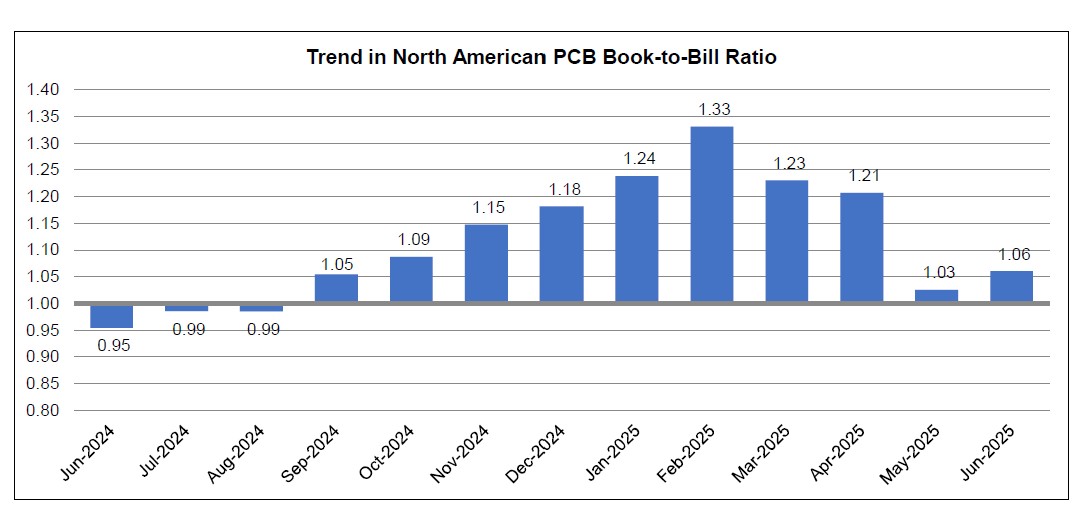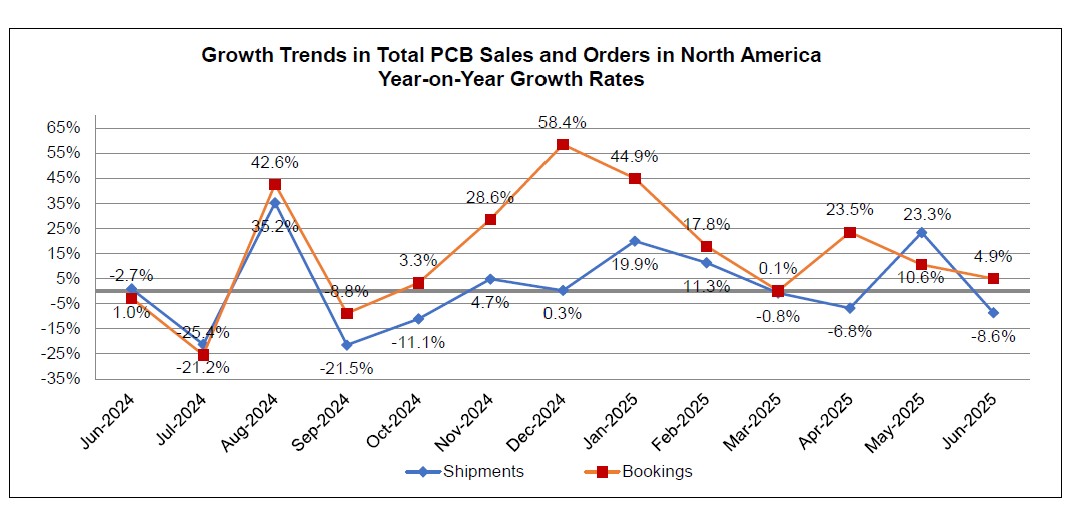North American PCB Industry Sales Down 8.6 Percent in June
The Global Electronics Association announced today the June 2025 findings from its North American Printed Circuit Board (PCB) Statistical Program. The book-to-bill ratio stands at 1.06.
Total North American PCB shipments in June 2025were down 8.6 percent compared to the same month last year. Compared to the preceding month, June shipments were down 19.2 percent. June's year-to-date (YTD) shipments increased by 5.3% year-over-year (YOY).
PCB bookings in June were up 4.9 percent compared to the same month last year. June bookings were down 2.1 percent compared to the preceding month. June’s YTD bookings increased 16.2% compared to the same period last year.
“June’s results reflect continued resilience in North American PCB production. The data signals stable demand and ongoing confidence in future output,” said Shawn DuBravac, Ph.D., IPC’s chief economist. “While flex bookings softened slightly, strong rigid bookings helped sustain the sector’s positive momentum."


Detailed Data Available
Companies that participate in the Global Electronics Association’s North American PCB Statistical Program have access to detailed findings on rigid PCB and flexible circuit sales and orders, including separate rigid and flex book-to-bill ratios, growth trends by product types and company size tiers, demand for prototypes, sales growth to military and medical markets, and other timely data.
Interpreting the Data
The book-to-bill ratios are calculated by dividing the value of orders booked over the past three months by the value of sales billed during the same period from companies in the Global Electronics Association’s survey sample. A ratio of more than 1.00 suggests that current demand is ahead of supply, which is a positive indicator for sales growth over the next three to 12 months. A ratio of less than 1.00 indicates the reverse.
Year-on-year and year-to-date growth rates provide the most meaningful view of industry growth. Month-to-month comparisons should be made with caution as they reflect seasonal effects and short-term volatility. Because bookings tend to be more volatile than shipments, changes in the book-to-bill ratios from month to month might not be significant unless a trend of more than three consecutive months is apparent. It is also important to consider changes in both bookings and shipments to understand what is driving changes in the book-to-bill ratio.
The Global Electronics Association’s monthly PCB industry statistics are based on data provided by a representative sample of both rigid PCB and flexible circuit manufacturers selling in the USA and Canada. The Association publishes the PCB book-to-bill ratio by the end of each month.